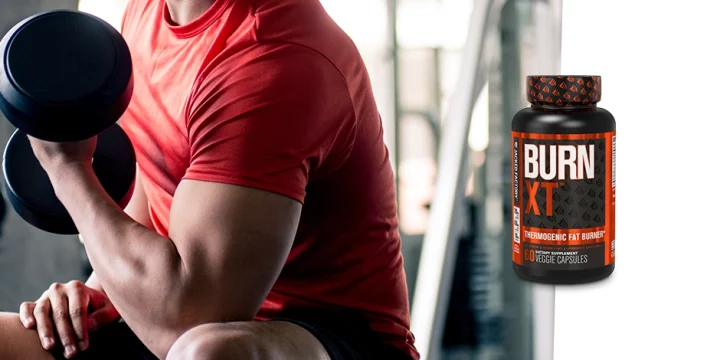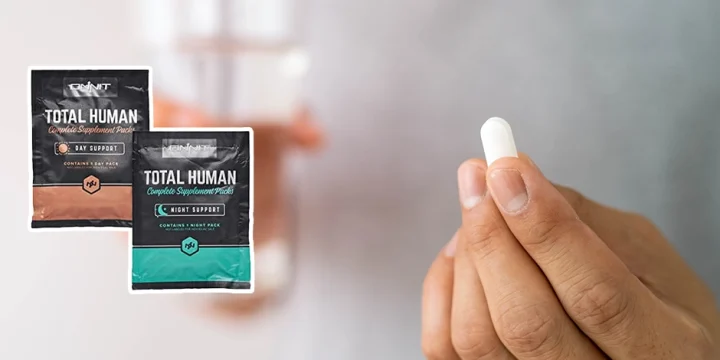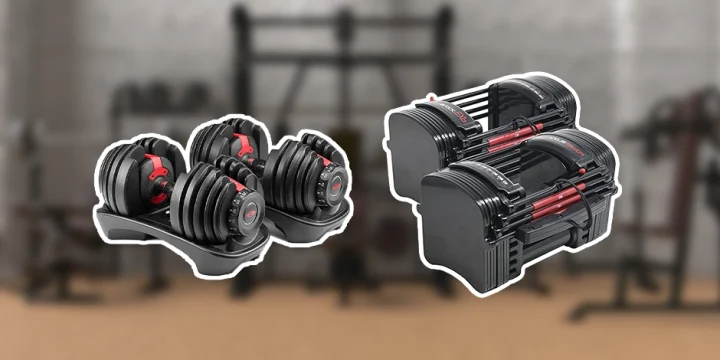If you want to know how you can maximize your low-intensity exercise and burn the most fat, then it’s time to calculate your fat-burning zone.
I spent hours digging into journals and articles to help my clients determine their target heart rate for fat loss or their fat-burning zone, and here’s how you can calculate yours.
Let's dive in.
Quick Summary
- The fat-burning zone is the target heart rate range of 60–80% of your maximum heart rate.
- To maximize fat burning during low-intensity exercise, calculate your fat-burning heart rate zone by subtracting your age from 220 and multiplying it by 60% to 80%.
- Vigorous exercise, as per a study in the National Library of Medicine, not only burns more calories but also significantly reduces body fat.
- I found that mixing low-intensity exercises with high-intensity workouts and incorporating moderate-intensity exercises can help achieve weight-loss goals effectively.
How To Calculate Your Fat-Burning Zone?
There are several approaches and methods to calculating the fat-burning zone, but let's go over the most commonly used one.
60-80% Of Your Maximum Heart Rate
For this method, start by subtracting your age from 220 and then multiply it by 60% (lower limit) or 80% (upper limit):
220 – (age) x 0.6 or 0.8.
To determine your target heart rate for shedding fat:
- Deduct your age from 220 to get the maximum heart rate (maximum number of times your heart beats during the activity).
- Multiply maximum heart rate by 0.6 or 0.8.
Here’s an example:
A 25-year-old woman’s maximum heart rate is 220-25=195 beats per minute. So, a 25-year-old woman's fat-shedding range is 60% or 80% of 195 bpm, 117 bpm, or 156 bpm, respectively.
What Is the Fat-Burning Heart Rate Zone?

The fat-burning zone, also known as fat-burning heart rate, is your target heart rate, where you burn more fat with more blood flow.
In technical terms, this zone lies between 60-80% of your maximum heart rate.
When exercising in this range, the intensity is relatively low – you can talk in complete sentences while exercising.
It is also said that it burns extra fat, leading to weight loss. That’s because, in less active physical activities, our bodies fuel energy by burning fats rather than carbs.
Achieving Weight Loss Effectively
Here are three ways:
- Mix up low-intensity exercises with high-intensity workouts.
According to a study in the National Library of Medicine, vigorous exercise burns more calories and also reduces fat [1].
“Doing different types of exercises keeps your workouts from becoming dull and makes your heart work on other heart rate thresholds. So, do hard, high-intensity interval training, have fun with cardio aerobic exercise, and mindfulness activities.”
- April Oury, P.T. M.S. & Founder of Body Gears Physical Therapy
2. Another way is to do moderate-intensity exercise such as cycling moderately, so you can drop extra calories and excess fat.
3. If you can’t go for vigorous activity yet for some reason, then aim to do low-intensity fat-burning activities for longer hours to shed calories and lose fat. Also, regularly exercising in the aerobic zone has noticeably improved my cardiovascular health.
Heart Rate Zones

Monitoring my heart rate has been crucial in understanding the intensity of my workouts and how hard my body is working.
Exercising at the right level of intensity (or at the right target heart rate) helps you avoid over-exercising or ensures you're working hard enough to achieve the fitness benefits from a particular workout.
As the percentage of heart rate increases, your exercise intensity also increases.
- Healthy heart range - 50-60% of maximum heart rate (max HR) - It’s the lightest and most comfortable exercise intensity. Working out in this range reduces blood pressure, lowers cholesterol, improves overall health, and helps recovery.
- Maintenance range - 60-70% of max HR - Working out in this range feels light. It helps you gain muscle mass, develops basic endurance, and improves your cardio and respiratory capacity.
- Aerobic range - 70-80% of max HR - Your body is working moderately in this range. You start to break a sweat after a few minutes, but there’s no anaerobic burn sensation, and it improves overall functional capacity.
- Threshold range - 80-90% of max HR - You’re already exercising very hard in this range: it helps improve your endurance and use up more calories from carbohydrates.
- The Redline range - 90-100% of max HR - The body is already working at maximum capacity in this range, so most people should avoid training at this level of intensity or do so for short periods only. It’s more fitting for elite athletes who can do extreme HIIT workouts for peak performance.
Related Article: Difference Between Weight Loss and Fat Loss
Impact of Different Types of Exercise on Fat-Burning Heart Rate
The heart rate zone you need to target for optimal fat burning can vary significantly depending on the type of exercise you engage in. Understanding how different workouts influence your fat-burning heart rate zone is crucial for tailoring a fitness routine that maximizes fat loss.
1. Strength Training
Strength training, such as weight lifting, has a unique impact on the fat-burning heart rate. While it may not consistently keep you in the traditional fat-burning heart rate zone, it boosts your metabolism long after the workout is over.
This means your body continues to burn calories at a higher rate, even when at rest. Incorporating strength training into your routine can enhance overall fat loss, even if your heart rate doesn't always hit the 'fat-burning' zone during the exercise.
2. High-Intensity Interval Training (HIIT)
Through my HIIT sessions, I've experienced my heart rate soaring beyond the usual fat-burning zone, which has been exhilarating and effective. However, similar to strength training, HIIT significantly increases calorie burn post-exercise.
The alternating intensity levels in HIIT can also improve cardiovascular health and increase overall fat oxidation.
3. Steady-State Cardio
Exercises like jogging, cycling, or swimming at a steady pace are often associated with the fat-burning heart rate zone. This zone is typically 60–70% of your maximum heart rate.
Steady-state cardio is effective for directly targeting fat stores for energy during the workout, making it a staple in fat-burning exercise routines.
My clients report that steady-state cardio like jogging has been great for directly targeting fat stores, making their workouts feel more productive.
How to Measure Your Heart Rate?

Whether you want to shed weight or achieve a specific aerobic fitness level, measuring your heart rate helps.
To know your resting heart rate or desired range for a specific physical activity, here are several ways to do it:
1. Chest-Strap Heart Rate Monitor
Using a chest-strap monitor has given me accurate heart rate readings, which has been essential in tracking my workout intensity.
It's a device you wear where the electrode sensors track your heart rate and send the data to your smartwatch or phone.
2. Wrist-Watch Monitor
I've found wearing a wristband heart rate monitor incredibly convenient, almost like having a fitness coach on my wrist.
They continuously track your heart rate and measure other physical activities such as daily steps, calories burned, and distance of workouts.
3. Traditional Tracking
You may also go old-school to know your pulse rate: place two fingers against your wrist (remember not to use the thumb) or find the artery in your neck on either side of your windpipe.
Count the beats within a minute, and that's your heart rate per bpm.
Here are a few tracker recommendations that can help you measure your heart rate:
FAQs
What Number Is Considered the Target Zone for Burning Fat?
There are different heart rate zones for different fitness goals; if you want to shed fat, the number for your target heart rate depends on your age. For calculating your ideal target heart rate for fat-shedding, use 220 – (your age) x 0.6 or 0.8.
How Long Should You Keep Your Heart Rate up To Burn Fat?
Try to keep your target heart rate at 15-20 minutes during your aerobic exercises, ideally 35-45 minutes, to reap maximum results.
How Much Cardio Should I Perform a Week To Lose Weight?
To achieve your weight loss goal, the U.S. Department of Health and Human Services (from the Physical Activity Guidelines for Americans) says you should do at least 150 to 300 minutes of moderate activity exercise or 75 to 150 minutes of intense aerobic exercise each week.
What Happens if You Go Over Your Max Heart Rate?
When you exercise beyond your maximum heart rate or above 85% of your target heart rate, it puts you at risk of overtraining, leading to fatigue and injuries. It’s especially important to be cautious when you're just starting to exercise.
References:
- https://www.ncbi.nlm.nih.gov/pmc/articles/PMC2991639/
About The Author
You May Also Like






